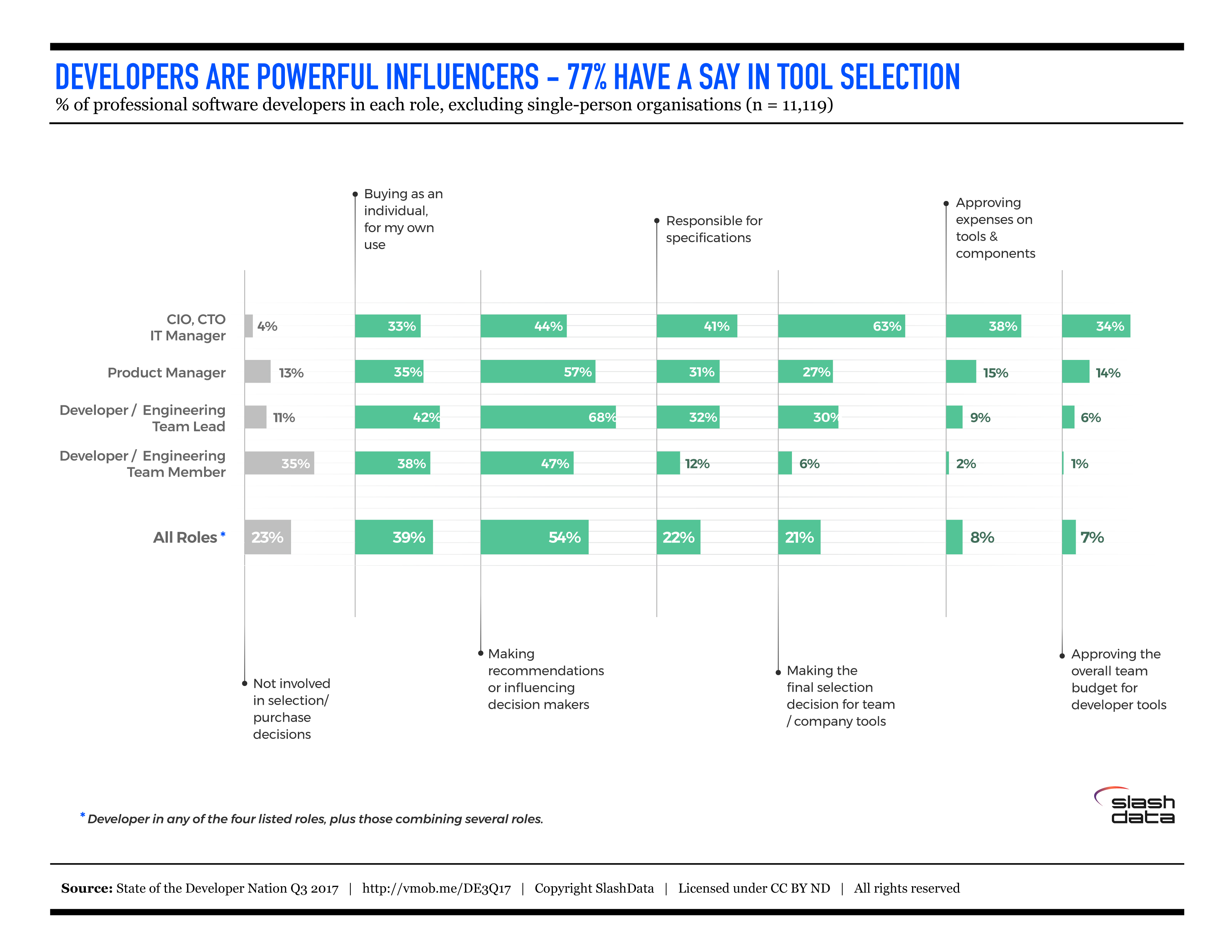SlashData has just released its “State of The Developer Nation Report for Q3 2017.” Here at Heavybit, a program that helps developer and infrastructure startups take their product to market, we look forward to SlashData’s reports that allow us to keep up to date on the shifts in the developer landscape.
In 2013, Stephen O’Grady published, “The New Kingmakers: How Developers Conquered the World,” sending shockwaves through the ecosystem about just how important individual developers are when it comes to making technology purchasing decisions in companies.
SlashData provides compelling data that backs up O’Grady’s book, showing how influential developers are within an organization and how targeting individual developers at organizations is a viable strategy for enterprise sales. The research only includes professional developers in organizations who buy tools or components and exclude lone wolves—developers who work on their own and where a purchase decision is purely personal.

Key report highlights Include:
More than 87 percent of developers with a leadership function, no matter how small, as well as two-thirds of front-line coders, are somehow involved in purchasing decisions.
For developers that are not in a top leadership position, between half and two-thirds are in a position to make recommendations or influence decisions. In particular team leaders (i.e., senior developers) are big influencers (68 percent).
Thirty-nine percent of developers acquire tools for their personal use.
The ability for developers to pick and use their own tools shows that they have the power to make their own decisions and a budget to spend (even if it is small). It’s through this personal use that a tool can get introduced to an organization and is the first step in evangelizing the tool to the greater developer community.
Up to a third of mid-level developer leaders (team leaders and product managers) hold the pen when writing specs for tools (32 percent and 31 percent, respectively), or even get the final word on which tool to adopt (30 percent and 27 percent).
This fact is even more proof that individual developers at all levels matter. “Even when in a majority of cases developers still need management to sign off on purchases, the days are over when an inadequate tool could be pushed from the top down because it appeared attractive to CFO’s or top brass,” the report states.
Developer influence, when it comes to making technology decisions in companies, continues to grow. To harness this shift, companies need to focus on creating tools that developers will come to love and evangelize on your behalf within their organization.



